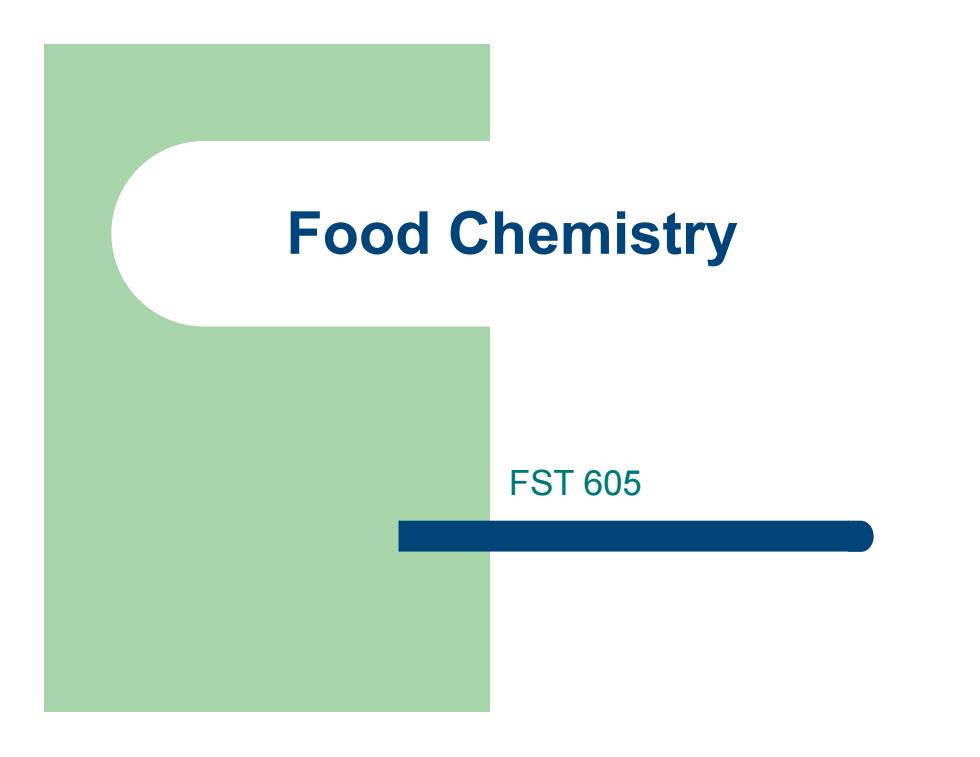
Food Chemistry FST 605
Food Chemistry FST 605
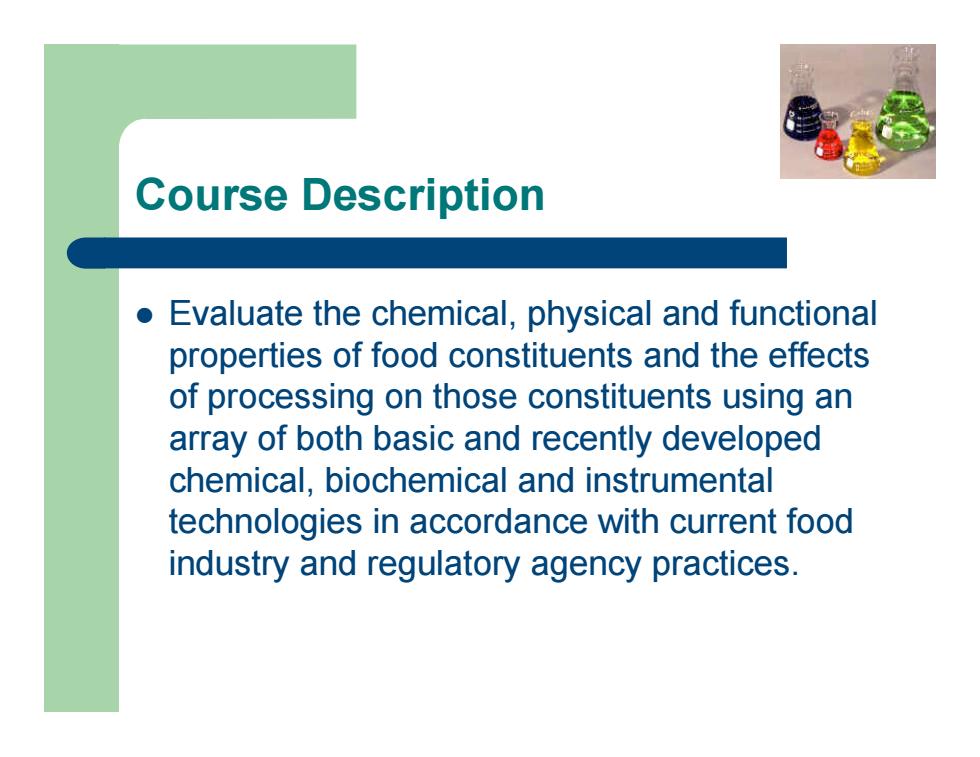
Course Description l Evaluate the chemical, physical and functional properties of food constituents and the effects of processing on those constituents using an array of both basic and recently developed chemical, biochemical and instrumental technologies in accordance with current food industry and regulatory agency practices
Course Description l Evaluate the chemical, physical and functional properties of food constituents and the effects of processing on those constituents using an array of both basic and recently developed chemical, biochemical and instrumental technologies in accordance with current food industry and regulatory agency practices
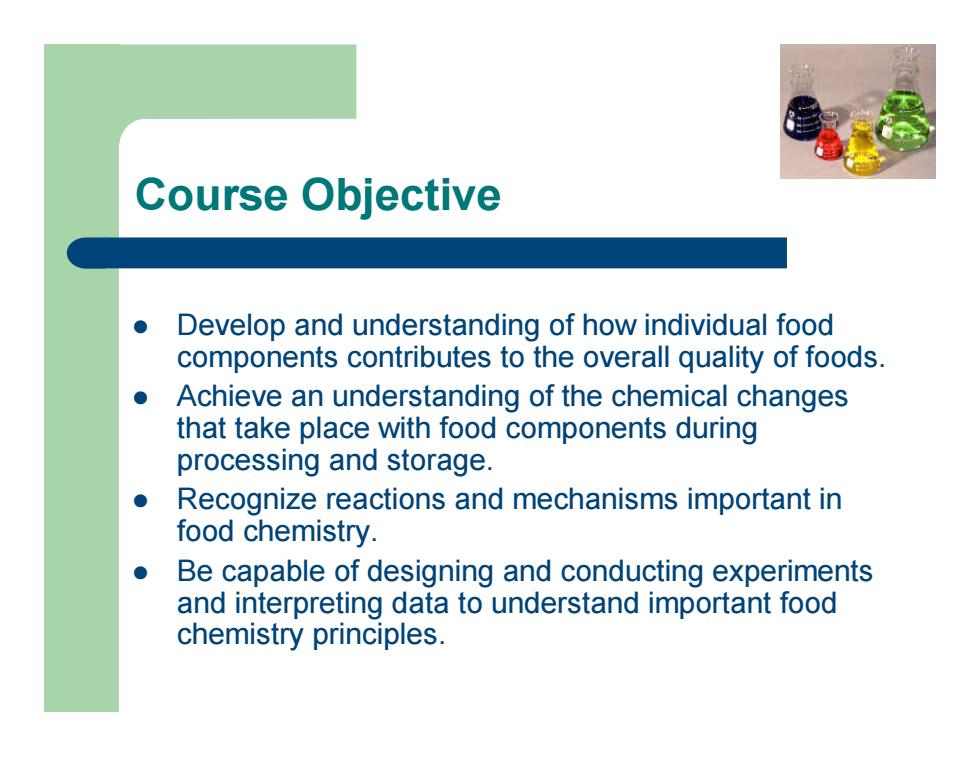
Course Objective l Develop and understanding of how individual food components contributes to the overall quality of foods. l Achieve an understanding of the chemical changes that take place with food components during processing and storage. l Recognize reactions and mechanisms important in food chemistry. l Be capable of designing and conducting experiments and interpreting data to understand important food chemistry principles
Course Objective l Develop and understanding of how individual food components contributes to the overall quality of foods. l Achieve an understanding of the chemical changes that take place with food components during processing and storage. l Recognize reactions and mechanisms important in food chemistry. l Be capable of designing and conducting experiments and interpreting data to understand important food chemistry principles
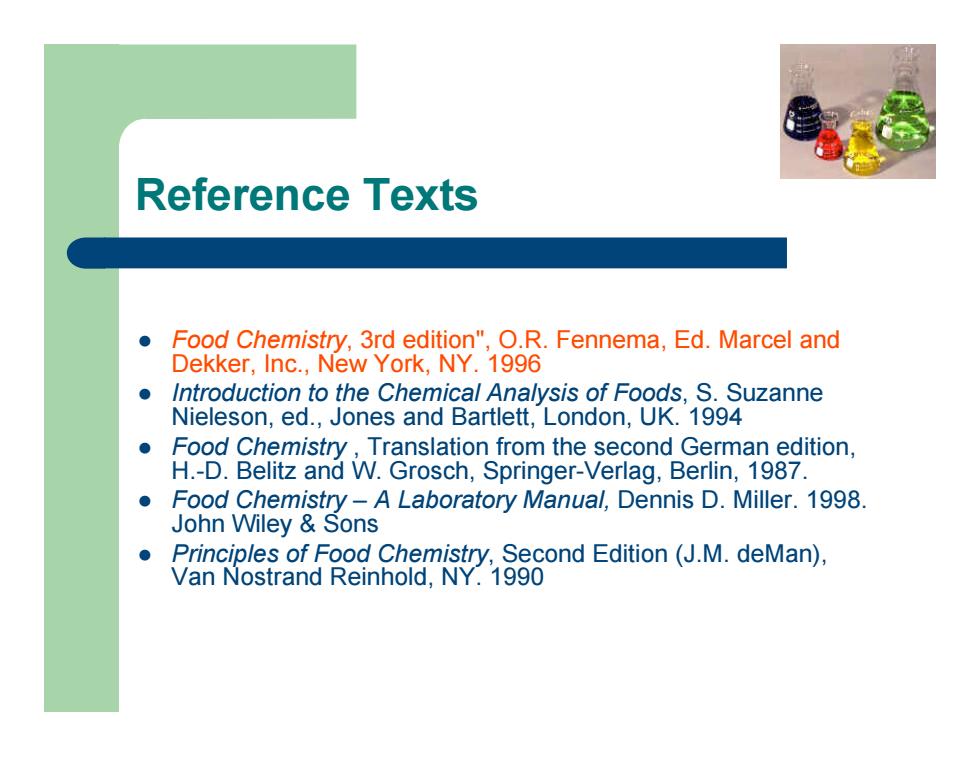
Reference Texts l Food Chemistry, 3rd edition", O.R. Fennema, Ed. Marcel and Dekker, Inc., New York, NY. 1996 l Introduction to the Chemical Analysis of Foods, S. Suzanne Nieleson, ed., Jones and Bartlett, London, UK. 1994 l Food Chemistry , Translation from the second German edition, H.-D. Belitz and W. Grosch, Springer-Verlag, Berlin, 1987. l Food Chemistry – A Laboratory Manual, Dennis D. Miller. 1998. John Wiley & Sons l Principles of Food Chemistry, Second Edition (J.M. deMan), Van Nostrand Reinhold, NY. 1990
Reference Texts l Food Chemistry, 3rd edition", O.R. Fennema, Ed. Marcel and Dekker, Inc., New York, NY. 1996 l Introduction to the Chemical Analysis of Foods, S. Suzanne Nieleson, ed., Jones and Bartlett, London, UK. 1994 l Food Chemistry , Translation from the second German edition, H.-D. Belitz and W. Grosch, Springer-Verlag, Berlin, 1987. l Food Chemistry – A Laboratory Manual, Dennis D. Miller. 1998. John Wiley & Sons l Principles of Food Chemistry, Second Edition (J.M. deMan), Van Nostrand Reinhold, NY. 1990
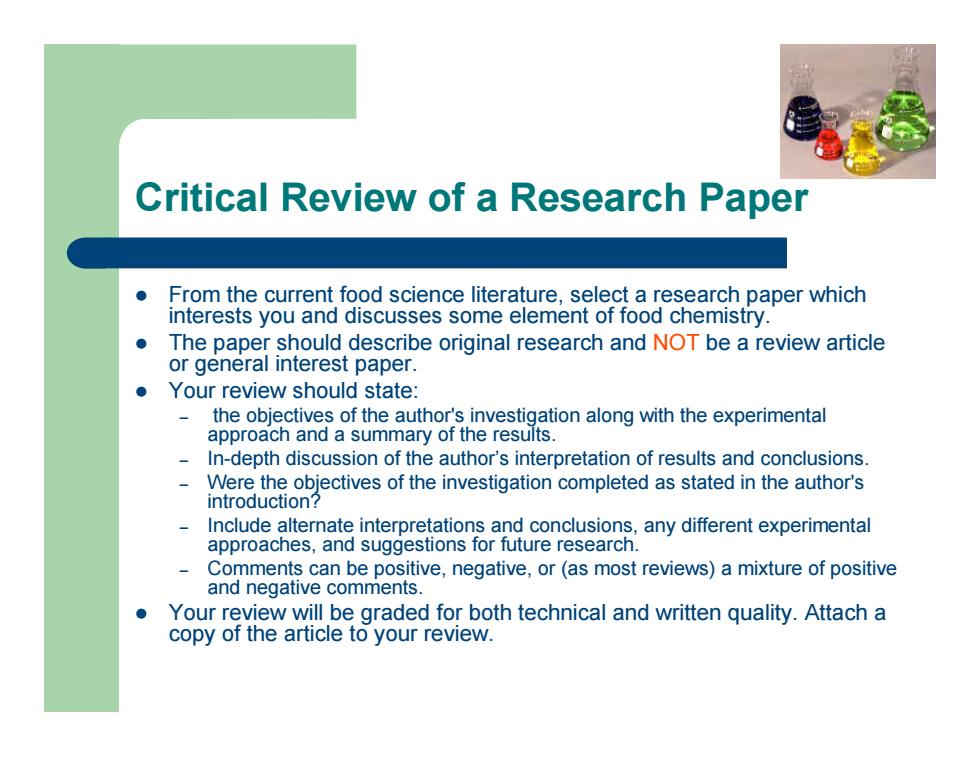
Critical Review of a Research Paper l From the current food science literature, select a research paper which interests you and discusses some element of food chemistry. l The paper should describe original research and NOT be a review article or general interest paper. l Your review should state: – the objectives of the author's investigation along with the experimental approach and a summary of the results. – In-depth discussion of the author’s interpretation of results and conclusions. – Were the objectives of the investigation completed as stated in the author's introduction? – Include alternate interpretations and conclusions, any different experimental approaches, and suggestions for future research. – Comments can be positive, negative, or (as most reviews) a mixture of positive and negative comments. l Your review will be graded for both technical and written quality. Attach a copy of the article to your review
Critical Review of a Research Paper l From the current food science literature, select a research paper which interests you and discusses some element of food chemistry. l The paper should describe original research and NOT be a review article or general interest paper. l Your review should state: – the objectives of the author's investigation along with the experimental approach and a summary of the results. – In-depth discussion of the author’s interpretation of results and conclusions. – Were the objectives of the investigation completed as stated in the author's introduction? – Include alternate interpretations and conclusions, any different experimental approaches, and suggestions for future research. – Comments can be positive, negative, or (as most reviews) a mixture of positive and negative comments. l Your review will be graded for both technical and written quality. Attach a copy of the article to your review